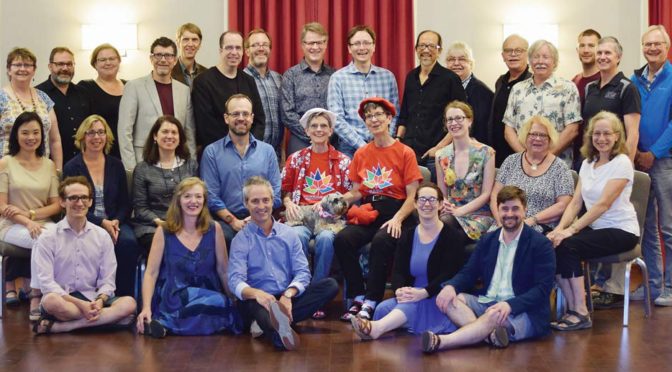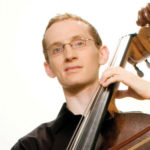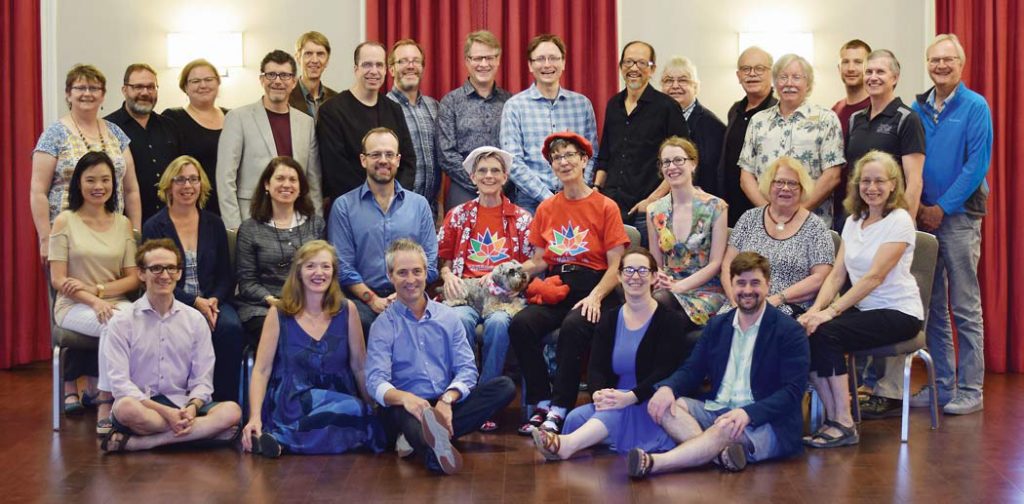It has been difficult writing for my colleagues during this pandemic, especially since so much can change during the month that will lapse between the time I am writing this and the time many of you will be reading it. But I am optimistic right now that we are heading to the coda of this rather long piece (after having had to take a few repeats that nobody wanted to take—I am sure all my orchestra colleagues have been on that gig).
Despite the severity of the pandemic during the end of 2020 and the beginning of 2021, all OCSM members that have service guarantees are being paid at least 65% of their normal compensation levels—the majority of these are being paid between 75 and 100%. For the general state of orchestras in Canada, I highly recommend two items found in the “Resources” section of Orchestras Canada’s website (https://oc.ca—look under the “Learn” tab on the homepage). One is a survey: OC surveyed its member orchestras last fall, and of the 57 that responded, 84% of these tried some sort of digital initiative during the pandemic, whether that be online concerts, special outreach projects, or online fundraising events. The other is the Comparative Report of orchestra finances from the 2019-20 season. That shows the direct initial financial impact of the pandemic.
The state of our organizations will be very much in mind as we look to the fall of 2021. All of us will hope to be released from side letters that were designed to get us through the pandemic, and we will need to be prepared for these negotiations. I think it is safe to say that at some of our organizations will want to continue producing online content. This may fill a need to serve patrons who are unable to make it back to the concert hall just yet, or they may just want to continue to develop digital content as part of the orchestra’s overall mission to serve its community.
With that in mind, and thanks to the tireless work of our two Canadian Symphonic Services Division employees, Richard Sandals and Bernard Leblanc, we now have an Integrated Media Agreement for Canada (IMAC). Richard has already presented it to OCSM delegates at our recent online meeting in January. Some of our orchestras have already ratified it. It is my hope that all orchestra committees and their locals will take a serious look at adopting the IMAC—it will create a national standard for media work in our field in Canada.
Beyond that, what lies ahead for OCSM? At our last executive meeting, we decided to recommend to the delegates that we continue to meet online for now, and hold our next live conference in 2022. As much as everyone is suffering from “Zoom Fatigue” (another new term the pandemic has given us), it has been an effective tool for us. We have started to invite observers from the orchestra committees of non-OCSM orchestras and it is my hope that this is a prelude to the expansion of OCSM—perhaps even to create two different organizations like our colleagues in the US (ICSOM and ROPA).
I am in my third decade of involvement with OCSM now, and there are issues that, despite the progress we have made, are still in need of work. One is the treatment of freelance musicians in our ranks. We call them “extras,” but who is kidding whom? Many of them are anything but “extra”. In some of our orchestras these “extras” have dedicated substantial portions of their careers to an ensemble, but they have never been afforded the benefits given to musicians doing essentially the same job. Nowhere was this made clearer than during the pandemic, when those without the protections afforded by our collective agreements were left behind, especially those musicians without the aforementioned service guarantees.
The pandemic brought another term to our everyday vocabulary, the idea of the “essential worker”—one whose services we cannot do without. We need to redefine what “essential workers” are in our orchestras, at least in terms of whom we protect with our collective agreements.
And lastly, I have always believed that union members should be activists by extension; and to that end, we need to continue to address the issues of Inclusivity, Diversity, Equity, and Accessibility (the IDEA acronym) within our organizations, whether it be our orchestras or our union. This will be an uncomfortable process for some of us; we will have to face down our history—right back to when the first orchestras were formed under aristocracy—and challenge many long-held notions of what we do. The conversation around this issue started years ago; it is now moving toward the action stage.
I hope this has given you all some food for thought. I can always be reached at president@ocsm-omosc.org and my colleagues among the OCSM executive committee and delegates are always willing to engage on these topics. I wish you all well in the remainder of this season.
Il est où, le signe de coda ?
par Robert Fraser, président de l’OMOSC et membre de la section locale 247 (Victoria, C.-B.)
J’ai trouvé difficile d’écrire à l’intention de mes collègues durant cette pandémie, notamment parce qu’entre le moment où j’écris et celui où vous me lisez, il peut se passer beaucoup de choses. Mais je me sens optimiste en ce moment, je crois vraiment que nous nous dirigeons vers la coda de cette longue pièce (après quelques reprises que personne n’avait envie de faire – je suis sûr que tous mes collègues d’orchestre ont connu ce genre d’engagement).
En dépit de la gravité de la pandémie à la fin de 2020 et au début de 2021, tous les membres de l’OMOSC qui profitent de garanties de service reçoivent au moins
65 % de leur rémunération normale, la plupart d’entre eux recevant entre 75 et 100 %. En ce qui concerne l’état général des orchestres au Canada, je vous recommande fortement deux lectures qui sont accessibles dans la section Ressources du site Web d’Orchestres Canada (https://oc.ca/fr/ – sous l’onglet « S’informer » de la page d’accueil). Le premier document est une enquête : Orchestres Canada a sondé ses orchestres membres l’automne dernier, et des 57 orchestres qui ont répondu, 84 % avaient tenté un genre ou un autre d’initiative numérique pendant la pandémie, qu’il s’agisse de concerts en ligne, de projets spéciaux de liaison avec la communauté ou d’activités de collecte de fonds en ligne. L’autre document, c’est le Rapport Comparatif financier des orchestres pour la saison 2019–2020. On peut aisément y constater l’impact initial direct de la pandémie.
L’état de nos organismes sera une préoccupation importante au moment d’envisager l’automne 2021. Nous voudrons tous nous libérer des lettres d’entente qui ont été conçues pour nous permettre de traverser la pandémie, et nous devrons être prêts pour ces négociations. Il me paraît clair que certains de nos orchestres voudront continuer à offrir du contenu en ligne, une option qui pourrait convenir à certains mélomanes qui ne sont pas en mesure de retourner à la salle de concert pour le moment ou qui pourrait s’inscrire dans la mission globale de l’orchestre en matière de service à sa collectivité.
Compte tenu de tout cela, et grâce au travail inlassable de nos deux employés de la Division des services symphoniques, Richard Sandals et Bernard Leblanc, nous disposons maintenant d’une Entente canadienne sur les médias intégrés (IMAC). Richard l’a présentée aux délégués de l’OMOSC lors de notre récente réunion en ligne, en janvier, et certains de nos orchestres l’ont déjà ratifiée. Je souhaite vraiment que tous les comités d’orchestre et leurs sections locales envisagent sérieusement d’adopter l’IMAC; nous aurions alors une norme nationale au Canada pour notre travail en matière de médias.
Au-delà de tout cela, qu’est-ce qui attend l’OMOSC ? À la dernière réunion de notre comité de direction, nous avons décidé de recommander aux délégués de continuer à nous rencontrer en ligne pour le moment et d’attendre 2022 pour tenir notre prochaine conférence en personne. Bien que tout le monde souffre de « fatigue Zoom » (une autre nouvelle expression issue de la pandémie), c’est un moyen qui s’est avéré efficace. Nous avons commencé à inviter des observateurs parmi les comités de musiciens d’orchestres non-membres de l’OMOSC, et j’espère qu’il en résultera une expansion de notre association ou peut-être même la création de deux associations différentes, comme chez nos collègues des États-Unis (l’ICSOM et la ROPA).
J’en suis maintenant à ma troisième décennie de participation à l’OMOSC, et en dépit des progrès que nous avons accomplis, il reste des enjeux qui réclament notre attention. Parmi eux, je pense au traitement réservé aux musiciens pigistes dans nos rangs. Nombre d’entre eux sont tout sauf « surnuméraires ». Dans certains de nos orchestres, ces « surnuméraires » ont dédié une partie importante de leur carrière à un ensemble en particulier sans jamais profiter des bénéfices accordés aux musiciens réguliers qui font essentiellement le même travail. Cela n’a jamais été plus évident que durant la pandémie : ceux qui ne jouissent pas des protections offertes par nos ententes les collectives ont été laissés de côté, particulièrement s’ils ne profitaient d’aucune garantie de services. D’ailleurs, la pandémie a introduit une autre expression dans notre vocabulaire de tous les jours, à savoir l’idée de « travailleurs essentiels », ceux et celles qui offrent des services dont nous ne pouvons pas nous passer. Nous devons revoir notre définition des « travailleurs essentiels » dans nos orchestres, au moins pour déterminer à qui nous accordons la protection de nos ententes collectives.
Enfin, j’ai toujours cru que les syndiqués devaient être des militants par extension; dans cette optique, nous nous devons de continuer à traiter les enjeux que sont l’inclusion, la diversité, l’équité et l’accessibilité (l’acronyme IDEA) au sein de nos organismes, qu’il s’agisse de nos orchestres ou de notre syndicat. Ce sera un processus dérangeant pour certains d’entre nous; nous devrons regarder notre histoire en face – remontant jusqu’à la création des premiers orchestres sous les aristocrates – et remettre en question des conceptions peut-être dépassées de ce que nous faisons. Les discussions autour de cet enjeu ont commencé il y a plusieurs années, nous en sommes maintenant au stade de l’action.
J’espère vous avoir donné matière à réflexion. Vous pouvez toujours me joindre en m’écrivant à president@ocsm-omosc.org, et mes collègues du conseil de direction de même que les délégués de l’OMOSC sont toujours disposés à échanger sur ces questions. Je vous souhaite tout le meilleur pour le reste de la saison.






